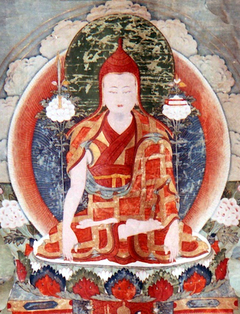Longchen Rabjam Series
English (119) | Deutsch (16) | Español (28) | Français (19) | Português (4) | Italiano (2) | Nederlands (1) | 中文 (7) | བོད་ཡིག (119)
Texts by and about Longchen Rabjam (klong chen rab 'byams, 1308–1364), also known as Drimé Özer (dri med 'od zer), who is widely acknowledged as the greatest exponent of Dzogpachenpo, or the Great Perfection, in Tibetan history:
Advice
Aspiration Prayers
Biography
Calling the Guru from Afar
Dzogchen
revealed by Pema Ledrel Tsal
revealed by Pema Ledrel Tsal
revealed by Pema Ledrel Tsal
revealed by Pema Ledrel Tsal
revealed by Pema Ledrel Tsal
revealed by Pema Ledrel Tsal
Empowerment Rites
Following a Teacher
Fulfilment
Guru Rinpoche Prayers
by Longchen Rabjam and Jigme Lingpa
Guru Yoga
History
Inventories
Lineage Prayers
Maṇḍala Offering
Meditation
Mind Training
Ngöndro
Poems
Praise
Sādhanas
revealed by Pema Ledrel Tsal
The Sealed Quintessence: The Innermost Secret Guru Practice of the Heart-Essence of the Vast Expanse
by
Jigme Lingpa
Samaya
Songs
Tantras
revealed by Pema Ledrel Tsal
revealed by Pema Ledrel Tsal
revealed by Pema Ledrel Tsal
revealed by Pema Ledrel Tsal
revealed by Pema Ledrel Tsal
